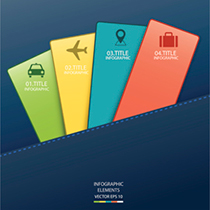By Dennis R Falk, Darrell A Hamlin
Abstract
Global engagement is a multi-faceted concept, and there are many components to educating globally competent citizens (Falk, Domagal-Goldman, & Hoerrner, 2014; Hartman, 2014). This second special issue of the eJournal of Public Affairs, along with the first special issue released in December 2014, reflects the breadth of activities related to internationalized engagement for fostering global competence among students, educators, and institutions. Indeed, colleges and universities, particularly those affiliated with the American Association of State Colleges and Universities (AASCU), are engaged in a range of such activities, drawing upon a wide variety of valuable resources.

Global engagement is a multi-faceted concept, and there are many components to educating globally competent citizens (Falk, Domagal-Goldman, & Hoerrner, 2014; Hartman, 2014). This second special issue of the eJournal of Public Affairs, along with the first special issue released in December 2014, reflects the breadth of activities related to internationalized engagement for fostering global competence among students, educators, and institutions. Indeed, colleges and universities, particularly those affiliated with the American Association of State Colleges and Universities (AASCU), are engaged in a range of such activities, drawing upon a wide variety of valuable resources. The December 2014 special issue included articles on the AASCU Global Engagement Initiative, an assessment of the AASCU national blended-learning course on Global Challenges, an examination of moral development and study abroad, and a narrative description and digital story about service-learning in Costa Rica. The teaching and learning essays provided reviews of TED Talks on global issues, a review of a global studies reader, and a consideration of how of literature can be used to increase global engagement. This content explores many approaches to educating globally competent citizens, and we encourage you to delve into the December issue if you have not done so already. The current issue expands the presentation of global engagement opportunities available to educators and students alike. The lead article by Shapiro, Anderson, and Clarke describes how the Global Challenges framework developed by the Center for Strategic and International Studies (CSIS) and adapted by the AASCU Global Engagement Initiative has been applied to courses at California State University, Fresno. Innovative learning activities and varied resources have been integrated into two upper division courses, one an honors course and the other a course focusing on critical thinking. The article also details how the Global Challenges framework was integrated into a first-year experience course. Assessments of outcomes and feedback from students are included for each course. Zappile and Mills offer a comprehensive description of AASCU’s Global Challenges blended-learning curriculum and explain how it has been used in an online pre-college course and an upper division general education course at their respective campuses (Richard Stockton College and Fort Hays State University). Their article encourages readers to consider the variety of courses and delivery models for which the Global Challenges curriculum may be of value. In “Using Research to Examine Global Challenges,” Buddie, Hill, and Poskus provide a novel way to integrate an adapted CSIS 7 Revolutions framework with a studyabroad experience. This article describes how a group of students from Kennesaw State University worked collaboratively with a group of students from a university in Brazil to develop a survey of beliefs related to the seven global challenges addressed in the framework, then to administer the survey to students in their respective countries, and finally to compare the results of the different groups. The authors examine the strengths and weaknesses of this project and then propose changes that would further enhance the experience for students. Educators are often so focused on student outcomes that they neglect to articulate their own growth through the programs offered to students. In light of this, we are so pleased to present Denise Horn’s invited article on “Teaching Abroad: Creating Global Citizens and Global Teachers.” Horn summarizes the history and benefits of international education, but then turns her attention to the challenges and impacts of teaching abroad. Building on her extensive personal experience, Horn explains aspects of her unique role as an educator who leads study-abroad experiences and shares the potential benefits a faculty member can gain from these experiences. Horn reminds readers that through study abroad, educators are not simply exposing their students to internationalized learning opportunities; they are sharing a potentially transformative experience with their students and with those who work with them in their home lands. As higher education changes in this era of new media, so do the possibilities for leveraging one’s scholarly expertise to serve a variety of constituencies. In a second invited article, W. John Green, editor and director of the Latin American News Digest—a bi-weekly publication aimed at students, academics, and policymakers—describes his central reasoning for launching the Digest. Green describes the challenges associated with being informed about a particular part of the world and explains, from a practical perspective, the process and choices involved in aggregating media from Latin America. To allow our readers to see for themselves, Green has also provided a link to a recent issue of the Digest. Educators generally agree that significant interaction with people in other parts of the world is a vital component to global engagement and to the development of global competence, but the vast majority of students are unable to study abroad. Elliott-Gower and Hill describe their experience using virtual intercultural interaction, via the Soliya Connect Program, on their two campuses. After summarizing information about Soliya and international education, the authors provide case studies of the Soliya Connect program at Georgia College and Kennesaw State University, including learning objectives, the process of intercultural interaction, and an assessment of learning outcomes. They conclude with reflections on this process based on their experiences. In their research note, “Undergraduates’ Awareness and Perceptions of Globalization: A Comparison of U.S. and Chinese Students,” Zollinger, Runfeng, and Campbell highlight evident differences in beliefs and attitudes of Chinese and U.S. students around the concept of globalization. We are grateful to them for providing us with an early slice of their project, and we are certain the authors would appreciate questions and feedback from readers to help refine their analysis as they move forward. Shelley Smith’s article describes “A Transformational Learning Model for Designing Internationalized On-Campus Courses.” Building on the literature related to international education and transformational learning, Smith outlines the tasks and instructional strategies that can be incorporated into a four-stage model for internationalizing courses. These strategies enable students to expand their consciousness and adapt their behavior on campus so they are better able to engage globally in the wider world. Finally, many college and university campuses hold events that emphasize the intercultural component of global engagement. Our featured video provides an overview of such an event at Missouri State University. The video exemplifies how institutions bring initiatives to the attention of their own students as well as potential partners in the community and abroad. Theories and data are vital, but ultimately global engagement is about connecting people who care about the world to the opportunities for understanding oneself and each other, in the context of a planet that is burdened with profound interrelated challenges. We are obviously and cheerfully promoting internationalized engagement for the purpose of transforming students, educators, and higher education itself. At the conclusion of these two special issues on Global Engagement, we can see that educating globally competent citizens at colleges and universities is a challenging task. While a wide-range of knowledge, skills, and attitudes are required to be globally competent, these back-to-back issues of the eJournal demonstrate multiple pathways and strategies for that objective. When each faculty member works to achieve competencies in each course that they teach, and in each learning experience they provide, we can collectively help students interact with greater purpose and impact in our globally interdependent society. Given the significant global challenges that we face, we need all capable hands on deck to survive and flourish in this world.




